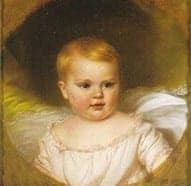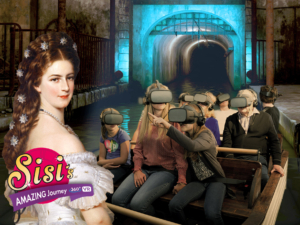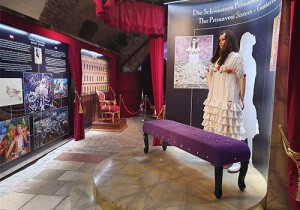What were the names of Empress Elisabeth’s first three children? What happened to the firstborn daughter? When was the long-awaited heir to the throne born?
The imperial couple’s first child was a girl – Sophie Friederike – named after her mother-in-law. It was unusual that Sisi’s mother was not present at the birth, which may have suggested family quarrels.
On the morning of March 5, 1855, Sisi went into labor and around 3 p.m. little Sophie was born. At first, Sisi felt quite strange having a child of her own, since she was only 17 years old herself.
According to court protocol, the child was taken into the care of the mother-in-law, to whom Sisi had to submit without objection. On a representative trip to Hungary in May 1857, Sisi prevailed over her mother-in-law and took Sophie with her on the trip.
The little girl fell ill with fever and diarrhea and died at the age of two on May 29, 1857 in Budapest. The imperial couple drove back to Vienna with the body of their child. This triggered a major crisis in the young couple and Sisi mourned the loss of her firstborn for a long time.
Birth of the second daughter Gisela
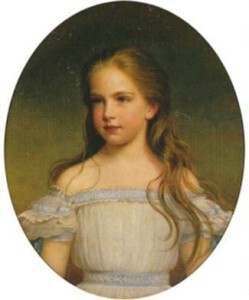
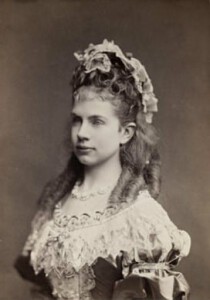
Gisela (1856-1932) Gisela in historical festival dress
Just one year after the first daughter, the second daughter, named Gisela Louise Marie , was born on July 12, 1856. The disappointment that it was not a question of a son and heir to the throne was great.
Gisela never had a close relationship with her mother, but rather with her younger brother, Crown Prince Rudolf, whose suicide she would never get over. Gisela resembled her father and was just as sober as he was.
She married Prince Leopold of Bavaria just as young as her mother, also aged 16, and had four children with him. She dedicated her life to social and church commitments. During the First World War, she set up a military hospital in her Munich palace.
After Sisi’s death, she inherited the Achilleion in Corfu. She died in Munich in 1932 at the age of 76, the last of the four children of Sisi and Franz Joseph.
The longed-for heir to the throne – Crown Prince Rudolf – was born in 1858
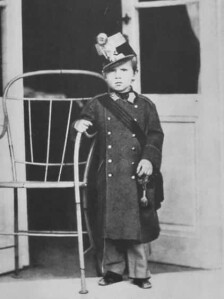
Crown Prince Rudolf (1858-1889)
In December 1857 Sisi showed signs of a new pregnancy . She now had to give up her beloved rides and go for a lot of walks instead. Starvation diets were also canceled.
On August 21, 1858, Sisi gave birth to the long-awaited male heir to the throne, Rudolf, in Laxenburg . The name goes back to the first Habsburg ruler, Rudolf.
Sisi had to recover from the difficult birth for an excessively long time. She was not allowed to breastfeed the child and as a result suffered from urgency and bouts of fever. As with the first two children, the mother-in-law Sophie took full responsibility for the child. Rudolf developed into a sensitive child and suffered from the strict upbringing methods. He was supposed to develop into a good soldier under military drill, but this was to fail.
At the age of 20, Sisi was now the mother of three and saw herself reduced to the role of the birthing machine. The children initially came into the care of the mother-in-law . She assumed that Sisi was still too young and inexperienced to be a mother. In courtly circles it was also customary to hand over the offspring to governesses and educators specially appointed for this purpose. As a result, Elisabeth’s relationship with her first three children was strained throughout her life.
Tip from Sisi’s Amazing Journey: Two of their children, Sophie-Friederike and Crown Prince Rudolf were buried in the Capuchin Crypt. The latter right next to Elisabeth in a beautiful Art Nouveau coffin.

